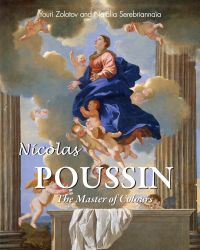Nicolas Poussin. The Master of Colours
Éditeur : Parkstone International
ISBN numérique ePub: 9781639199631
Parution : 2022
Catégorisation :
Livres numériques /
Autre /
Autre /
Autre.
Formats disponibles
| Format | Qté. disp. | Prix* | Commander |
|---|---|---|---|
| Numérique ePub Protection filigrane*** |
Illimité | Prix : 20,99 $ |
*Les prix sont en dollars canadien. Taxes et frais de livraison en sus.
***Ce produit est protégé en vertu des droits d'auteurs.
Description
Nicolas Poussin(1594 - 1665) was undoubtedly a highly significant master of the historical genre. He shaped its aesthetics which, regrettably, subsequently became regarded as a set of hard-and-fast rules (a trap which the Russian followers of the founder of classicism also fell into). We know that Poussin attributed prime significance to the actual choice of matter for depiction, giving preference to subjects which provided food for profound thought. Creatively reworking the aesthetic legacy of the Ancients, he introduced into the realm of painting the concept of the “modus?? (mood of depiction), which established the functional unity of three components: the idea, the structure of the depiction, and its perception by the viewer. Composition assumed a predominant significance in his artistic system. In a letter of 1665, Nicolas Poussin put forward three main theses: firstly, painting is simply imitation; secondly, it aims to bring delight; Thirdly, the artist is endowed with a natural talent that no one can give him or deprive him of.























